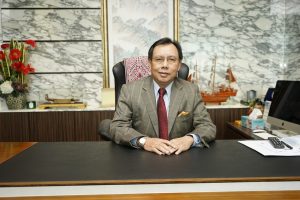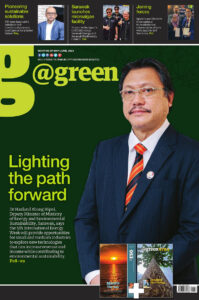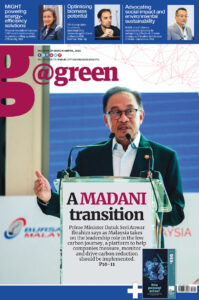Sarawak’s hydro resources raise Malaysia’s RE capacity mix
With Sarawak’s substantial hydro resources now included in the Renewable Energy (RE), Malaysia can increase its national RE capacity mix objective from 20 per cent to 31 per cent by 2025.

Dato Sri Dr Stephen Rundi Utom, Sarawak’s Utilities Minister, stated that Sarawak contributes 3,452MW of RE from its major hydropower facilities out of Malaysia’s total large hydro generating capacity 5,684MW.
Sarawak Energy, the State’s energy developer and power utility, operates the Batang Ai HEP (108MW), Bakun HEP (2,400MW), and Murum HEP (944MW).
“Sarawak is completely dedicated to supporting and contributing to Malaysia’s Paris Agreement commitments by assisting the government in meeting its Nationally Determined Contributions (NDCs) to reduce carbon emissions,” said Stephen recently, according to Dayak Daily.
“As Minister for Utilities, I am glad that Sarawak’s vast hydro resources are now included in Malaysia’s RE definition.
“By doing so, the federal government may strengthen Malaysia’s Conference of Parties (COP21) commitment by raising the national RE capacity mix objective from 20 to 31 per cent by 2025.”
Stephen further stated Sarawak’s renewable energy generation capacity would be increased by the 1285MW Baleh Hydropower Project, which is set to be completed in 2026.
“This will eventually be counted in Malaysia’s renewable energy target of 31 per cent of RE capacity by 2025, with a ramp-up to 40 per cent by 2035,” he added.
Sarawak is reaping environmental benefits in addition to job creation and increased electrification coverage. It has decarbonised its power system by reducing grid carbon emission intensity by 68 per cent since 2010.
Sarawak issued its first Renewable Energy Certificate (REC) in 2019, allowing corporations to purchase renewable energy generated in the State.
Stephen added under the Ministry, renewable energy sources, particularly solar and mini-hydro, are harnessed to supply remote rural communities via a stand-alone off-grid system. This is through the Sarawak Alternative Rural Electrification Scheme (SARES) for smaller and dispersed rural communities and the Hybrid Scheme for larger remote communities such as Bario and Long Banga.
“The entire installed capacity of these off-grid renewable systems of roughly 20 MW has benefited the State’s rural populations, which now have 24-hour supply,” he said.
Aside from harnessing the State’s huge hydro resources, the Nett Energy Metering (NEM) programme for home, small commercial, and industrial consumers in Sarawak is an initiative classified within the RE sector.
Sarawak now has 25 projects (mostly education centres) totalling 570kWp of rooftop solar with NEM mechanism.
“NEM has been identified as a programme to be rolled out as part of the RE initiative to encourage customers to participate in generating green energy for self-use through the State’s 12th Malaysia Plan (12MP) from 2021-2025. The goal of this programme is to reach 150MW of renewable power under NEM by 2030,” he emphasised.








